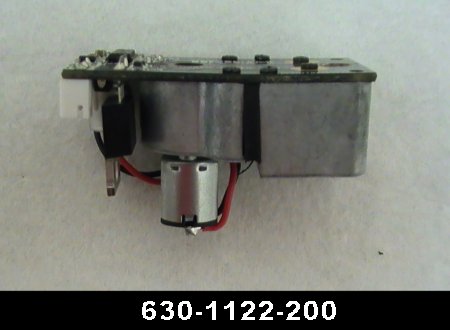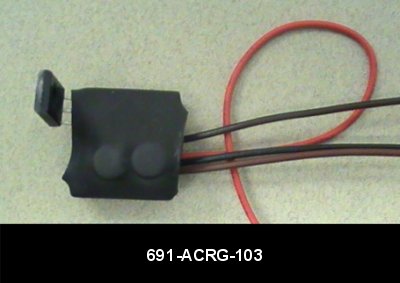Thanks @gunrunnerjohn. I enjoy technical challenges, but this is all new ground for me and a deep rabbit hole ;-) But I love this little loco and I'd be so happy to upgrade the smoke unit to something that really upped the volume. Ditto with several other of my Legacy steamers.
Can you (or anyone) advise if a Super-Chuffer II is likely to fix the issue where my loco is not recognizing smoke commands from my Cab 2? If the switch is turned on (underneath the loco) it always smokes; no way to control it. Which board or component is most likely the culprit
ANSWER: NO,the super chuffer ONLY controls the fan, the smoke resistor is controlled by the Lionel AC smoke regulator module.
If this were your loco, is there a better upgrade path than simply replacing a bad board (if even available) with the same thing? I.e. is there a newer set of boards available (keyword!) from Lionel that would be a better option?
No, the regulator board is the regulator board. Nobody else makes one.
Also do you have any idea if the Super-Chuffer II is likely to fit inside this loco (6-11117 4-4-2 Atlantic E6 made in 2008)? Sure, probably a tight fit, but shoehorn it in there somewhere.
Oh, also, I've only found examples of folks upgrading steam locos with the Super-Chuffer II. I have a handful of early-Legacy diesel locos that I'd love to upgrade to better smoke. Is that an option?
No need for super chuffer on a diesel IMO. Remember super chuffer is just that- about steam chuffing. Since Diesels do not chuff you gain nothing.
Thanks for your time!
Again, here is the basic deal going on.
Your engine uses the Lionel smoke regulator that takes AC track power, and then also a serial data signal from the main controller receiver of the engine and uses that information to turn on and limit the voltage to the smoke resistor. That's it's whole job in life- convert track power to a suitable voltage and also listen to and follow the control signals. This is a $30 board from Lionel parts and most parts orders incur $10 shipping + tax. So a $40+ hit right there. I'm not convinced your board is bad and replacing it may result in no change. That's how it works. You keep saying it's not turning off but again, given this unit, they typically fail full on with huge smoke until it burns out or no smoke ever because it's burned out. This middle stuck on but not producing excessive smoke is more like how it works than a real problem. Direct link to the part https://www.lionelsupport.com/AC-REGULATOR-S03-CODE
Second part of this is, understanding the OTHER part- the fan control. Your engine uses the integrated analog smoke control PCB on the top of the smoke unit. This part is working and nothing is technically wrong with it. This part is no longer available at Lionel.

Effectively this is the same circuit that I have and also in gunrunnerjohn's ten wheeler that is still an analog control. By analog, we mean no microprocessor. What is does is then puff the fan for a timed sequence after every switch closure on the input. It doesn't run the fan at all unless there are periodic closures of the chuff switch.
The Super chuffer is a replacement board that also uses track power, and regulates that to DC required for the fan motor. It contains a microprocessor with code that then can determine when the smoke unit resistor is ON (one of the inputs) and combined with the chuff switch input then pulses and brakes the fan motor dynamically to create a very distinct puff of smoke. That is what you are paying for- not just the circuit- but that smart firmware code that determines when the smoke unit is actually on, determines when the train is stopped or moving based on timing of the pulses, and then that enables idle smoke where the fan spins at a lower speed to create a steady stream of smoke at idle, and then also distinct puffing timed with the chuff sound when moving. Cost of this part is $74.99 + shipping +tax.
Now if you do the work, and only buy the parts, that's roughly approaching $140 in parts alone. If you have to ship the engine, pay for labor +parts + shipping both ways, this easily becomes likely a $200-$250 upgrade just to fix your smoke unit system.
Again, bottom line, I'm not even convinced you have a problem. It's working mostly as intended or what can be expected.
Yes, adding the superchuffer is an upgrade, yes it would be shoehorned in there, yes, electrically it's compatible with your engine, yes, it gives you
#1 it turns off the fan if/when the smoke resistor is off.
#2 It provides idle smoke fan control to prevent overheating of the smoke unit when the engine is stopped while providing the useful feature of smoke flowing rather than a wisp at idle.
#3 Because it knows the state of the engine (moving VS idle) it can control a feature like a cab light that is on when idle and off when moving.
However, all that said, it cannot do jack squat for controlling the smoke resistor, or changing the Lionel regulator from listening to or following TMCC/Legacy smoke level settings because that is the function of the smoke regulator.









